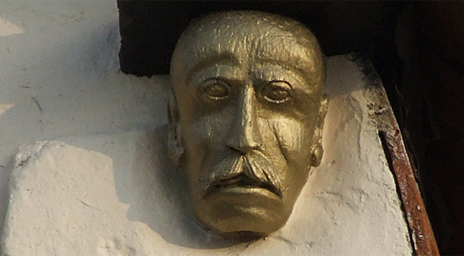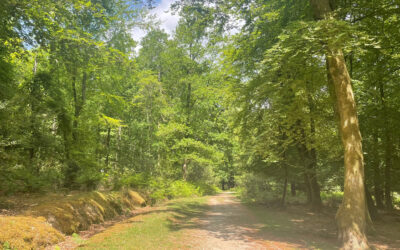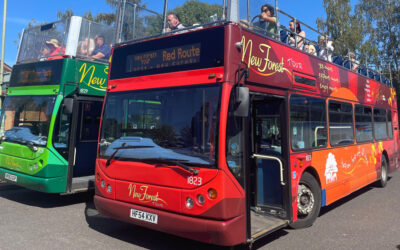The New Forest we know today is largely down to its unique history – how it has been ruled, worked and lived in over centuries.
Telltale signs of that history can be spotted on many popular walking routes.
A royal hunting ground
When The New Forest – or Nova Foresta – was established by William the Conqueror in 1079, it was a vast area kept strictly as a royal hunting ground for deer, wild boar and other game.
Local people could not even erect fences as that would impede the thrill of the royal chase.
A harsh ‘Forest Law’ was overseen by the Verderers – local knights appointed by the crown.
Severe penalties and mutilations were handed out to anyone who committed offences – you could be blinded for harming a deer, and even dogs over a certain size were crippled to prevent them chasing deer.
As time went on, Forest Law was eased and those who lived in the forest were given certain rights to compensate for the restrictions caused by the royal hunts – they could graze their ponies, cattle, donkeys and sheep.
They were given the right of pannage – turning pigs out to eat the acorns in autumn. During pannage, look out for pigs snuffling on our Millyford Bridge and Fritham walks.
There are over 300 commoners who still exercise these rights which are administered by the Verderers Court which sits at the Queens’ House in Lyndhurst. You pass the Queen’s House on our Brockenhurst-Lyndhurst walk.
Shipbuilding at Beaulieu
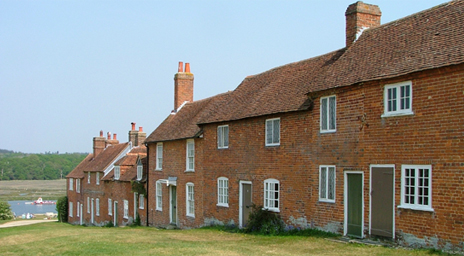
Many of the inclosures you come across while walking were created to protect timber plantations and prevent animals from damaging saplings.
With huge supplies of oak, it was not surprising the New Forest became the centre of shipbuilding for the expanding British Empire in the 17th and 18th Centuries.
On the Beaulieu to Bucklers Hard walk, you can still see the signs of that seafaring heritage.
In total, over 50 ships were built for the navy along the river over the years – including The Salisbury and the Agamemmnon – Admiral Horatio Nelson’s favourite ship.
The rows of terraced houses in the village are set far enough apart for giant oak trees to be rolled down to the riverside.
The Bucklers Hard Museum tells the story of the village and master ship designer Henry Adams.
Smuggling in the New Forest
In the 18th and early 19th Centuries the New Forest was also notorious as a centre of the lucrative smuggling trade.
It was a time when taxes on luxury goods like tea, brandy, and tobacco were set very high by the government.
At Burley, you can see evidence of the heath paths which were used by smugglers to bring their illegally-imported contraband from the coast in an attempt to evade the hefty duty.
The village was at the centre of the trade, being on the ‘Smugglers Road’ from Christchurch to Salisbury.
A secret cellar in the Queen’s Head pub in the village was used to store the smuggled goods.
Local girl Lovey Warne became famous in New Forest history for her exploits traveling to meet ships at Christchurch or Mudeford.
Lovey would undress and wrap her body with smuggled silks and fabrics. She would put her clothes back on top and return to Burley, evading the ‘Excise men’.
The New Forest at war
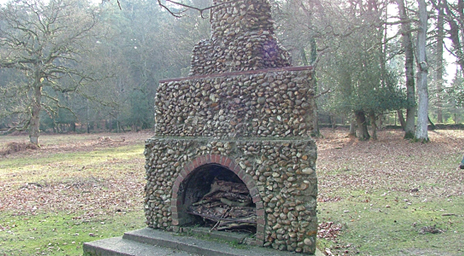
The two world wars played a big role in New Forest history.
During World War 1, Portuguese soldiers were stationed in the forest as lumberjacks. The Portuguese Fireplace, near Bolderwood, is all that is left of their cookhouse.
You’ll pass the fireplace on a patch of grassland a short distance from Millyford Bridge.
The New Forest was a source of wood for props in the trenches and many New Forest ponies were rounded up and taken to France as working animals.
Wounded servicemen were treated at a hospital in Brockenhurst and St Nicholas’ church in the village has the graves of New Zealand, Australian and Indian troops. You can visit the military cemetery near the start of our walk through Roydon Woods.
During World War 2, the New Forest was a hive of activity as Allied troops gathered before D-Day and the liberation of mainland Europe from Nazi occupation.
There were 12 airfields dotted around the forest. Because of its flat open spaces and proximity to the coast, the forest was the perfect place to locate airfields for both fighters and bombers.
You can see evidence of concrete runways and taxiways in car parks and pathways around the forest, including on a walk from Janesmoor Pond, near Stoney Cross airfield.
Some of the Mulbery Harbours were constructed on the Beaulieu River.
These giant concrete blocks were floated across the Channel following the D-Day landings to allow vital supplies to be landed in Normandy.
Many buildings in the forest were commandeered for military use.
They included Exbury House which was re-named HMS Mastodon and used as a top secret Royal Navy base where the invasion’s landing craft were organised from.
Balmer Lawn Hotel was used as the HQ for the Canadian 3rd Infantry Division in the run-up to D-Day. Canadian troops who were stationed in the forest are commemorated at a memorial near Bolderwood.
On the open heath near Fritham and Godshill, the ground is still pockmarked by the bomb testing that was carried out there during the war.
Other historical places of interest
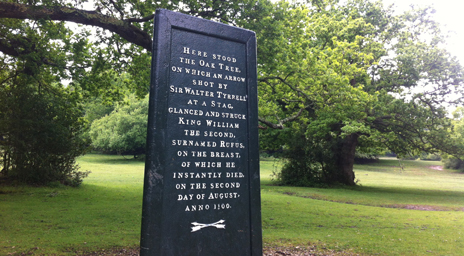
The forest is full of historical interest, but a few others landmarks which you may come across on a New Forest walk include the Rufus Stone at Brook – where King William Rufus reputedly met his death in a hunting accident in 1100.
There is also the last resting place of Alice Liddell at St Michael and All Angels Church in Lyndhurst.
As a little girl, Alice was the inspiration for Alice in Wonderland stories, written by a family friend, Charles Dodgson, who wrote under the pen name Lewis Carroll.
And at Minstead Parish Church you’ll see the grave of Sherlock Homes creator Sir Arthur Conan-Doyle.
As a devoted Spiritualist, after his death in 1930 he was buried in an upright position in his garden in East Sussex and was only moved to Minstead in 1955 when the house was sold.
Have a look at our list of History Walks for routes which pass landmarks of places of historical interest in the New Forest.
